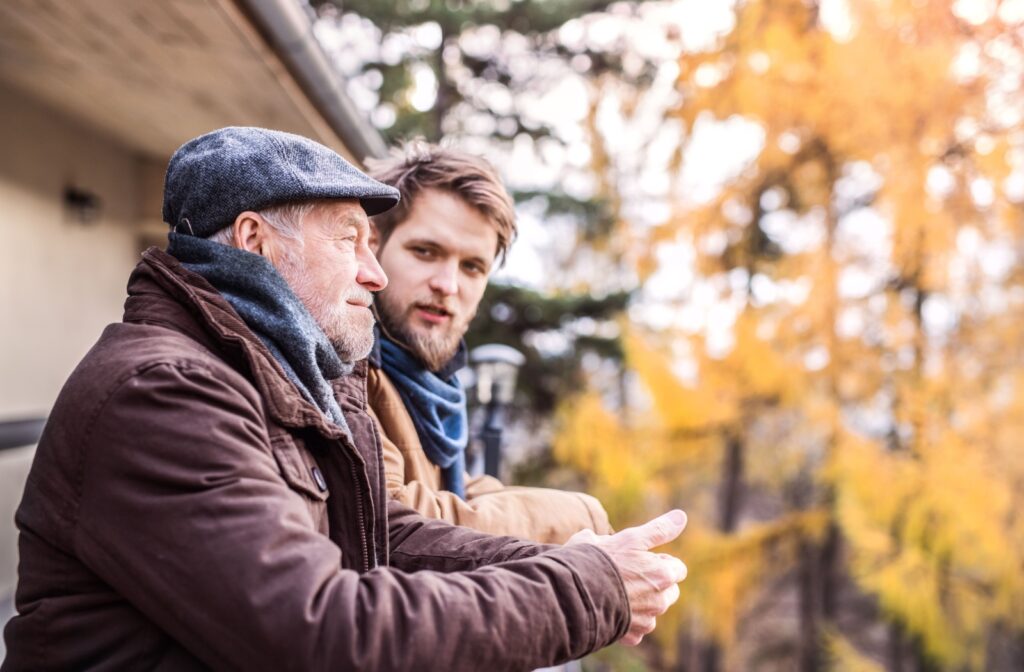Memory care communities, like the one at Boden Senior Living in Coon Rapids, are designed to provide specialized care for people with memory-related conditions such as Alzheimer’s and dementia.
These communities offer a safe, secure environment with trained staff who understand the unique needs of those living with memory loss.
Memory care communities focus on creating a supportive atmosphere where residents can thrive, maintaining as much independence as possible while receiving the care they need.
From structured daily routines to enriching activities tailored to cognitive abilities, memory care aims to enhance quality of life and foster a sense of belonging.
Transitioning a loved one into memory care can be a deeply emotional experience. You may need some help in the process. Here are some tips to help make things a little easier for everyone:
- Visit the facility together
- Communicate openly
- Personalize their space
- Stay involved
- Introduce your loved one slowly
- Utilize support services
Signs It’s Time for Memory Care
Recognizing when it might be the right moment to transition to memory care is crucial for the well-being of both the caregiver and the loved one. Here are some signs that it may be time to consider this move:
- Increased forgetfulness: Frequent memory lapses that interfere with daily life.
- Safety concerns: Wandering, getting lost, or difficulty managing medications.
- Decline in health: Noticeable weight loss, poor hygiene, or unmanaged chronic conditions.
- Social withdrawal: Reduced engagement in previously enjoyed activities and social interactions.
- Caregiver stress: Feeling overwhelmed, exhausted, and unable to provide the necessary care.
Transitioning Into Memory Care
Transitioning a loved one into memory care is an experience that requires patience, understanding, and careful planning. Here are some tips to help you get started.
Visit the Facility Together
Schedule a tour of the memory care facility with your loved one to help them become familiar with the environment and staff. Taking this step together can ease anxiety and make the transition smoother.
Your loved one needs to see firsthand the caring nature of the staff and understand the amenities and programs available. This visit can help set the stage for a positive move.
Communicate Openly
Discuss the transition honestly and empathetically, addressing any fears or concerns they may have. Open communication can build trust and foster understanding, making the transition less daunting.
Listening actively and validating their feelings is as important as providing reassurance and support throughout the process.
Addressing their concerns head-on can help alleviate anxieties and make them feel more secure about the move.
Personalize Their Space
Bring personal and familiar belongings to make their new living space feel more like home. Photographs, favorite blankets, and cherished mementos can provide comfort and a sense of continuity.
This personalization can help your loved one feel more at ease and create a nurturing environment that reflects their personality and history, making the new space feel familiar and inviting.
Stay Involved
Visit and participate in community activities regularly to maintain a strong connection and support system. Seeing familiar faces and engaging in shared activities can help your loved one feel loved and supported.
Your active involvement also helps you stay informed about their well-being and progress, providing peace of mind for both of you.
Introduce Your Loved One Slowly
Gradually introduce your loved one to staff members and other residents to foster comfort and familiarity. Building these relationships slowly can help your loved one feel more secure and part of the community.
Gentle introductions can ease the sense of being overwhelmed and make the new environment feel more welcoming.
Utilize Support Services
To navigate the emotional aspects of the transition, take advantage of counseling and support groups for both yourself and your loved one. These resources can provide valuable guidance, emotional support, and practical advice.
Support services can help you address the stress and emotions of such a significant change, helping you and your loved one feel supported throughout this journey.
Managing the Move-In Day
The day of the move can be challenging but manageable with careful planning:
- Keep calm and positive: Maintain a calm and positive demeanor to help ease any anxiety your loved one may feel.
- Stay with them: Spend ample time with your loved one, helping them settle in and become acquainted with their new surroundings.
- Engage with staff: Introduce your loved one to the caregivers and staff who will be part of their daily lives.
Supporting Your Loved One Post-Move
After the move, continue to provide support and reassurance. Visit regularly, participate in community events, and maintain open lines of communication with the staff.
Keeping a consistent presence in your loved one’s life helps them feel connected and supported. Helping a loved one move into memory care can be a challenging experience, but with the right approach, it can also be a deeply rewarding one.
By preparing and involving your loved one in the process, you can create a positive and empowering experience. Remember, you are not alone—our community is here to support you every step of the way.
If you have any questions or need additional guidance, don’t hesitate to reach out to us at Boden Senior Living in Coon Rapids.




